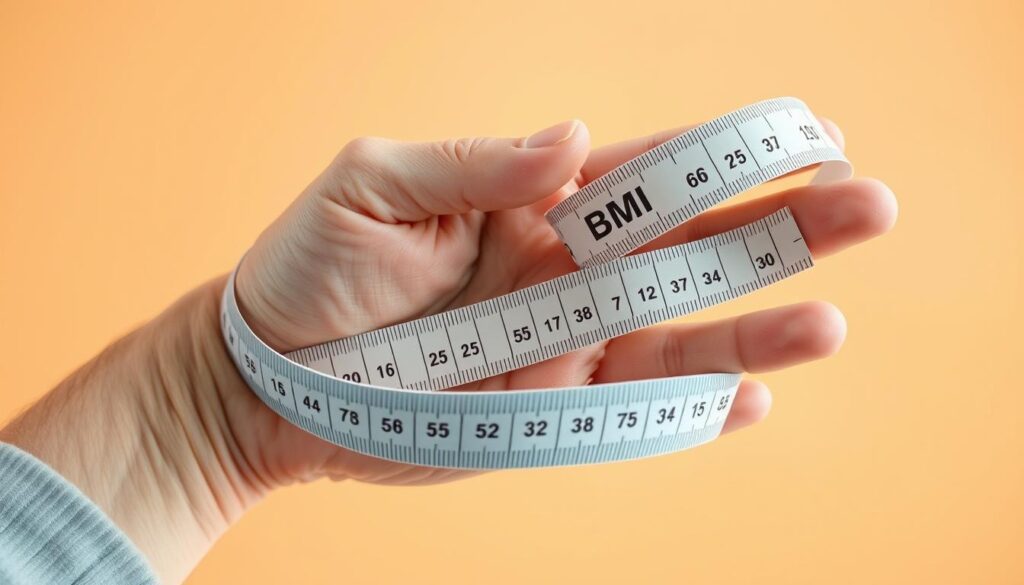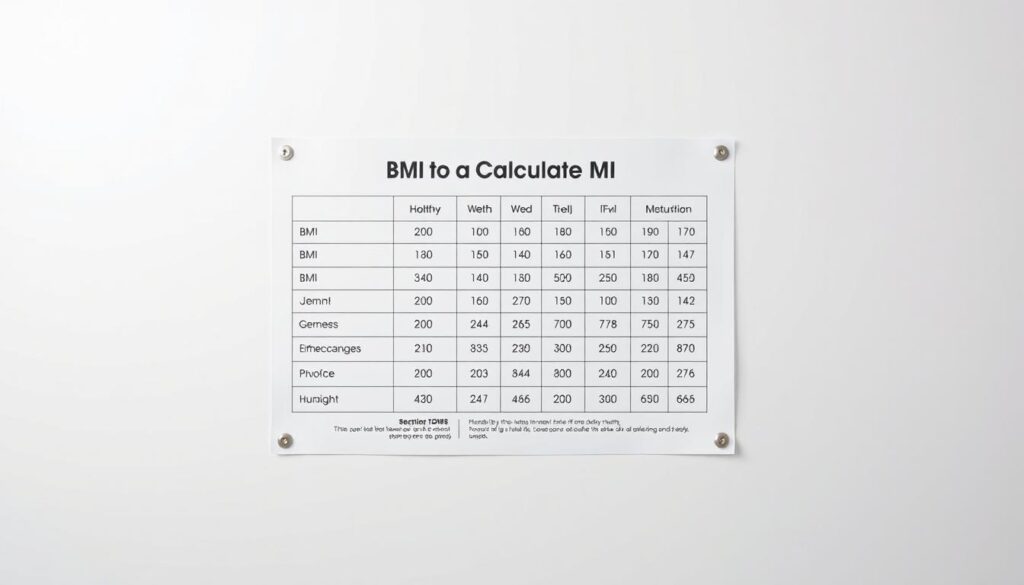As we get older, keeping a healthy weight is very important for our overall health and well-being. But have you thought about how a simple measurement can help manage weight and prevent health problems as we age? Knowing about Body Mass Index (BMI) is key, for seniors in Sydney who want to stay healthy.
Recent studies show that BMI thresholds change for older adults. Research suggests different cut-offs for being underweight, overweight, and obese based on age.
BMI can be a useful tool to check our weight status. By knowing BMI categories, we can take steps towards a healthier lifestyle.
Key Takeaways
- Understanding BMI is crucial for seniors to manage weight and prevent age-related health issues.
- BMI thresholds vary for older adults based on age, as indicated by recent research.
- Using a senior health BMI calculator can help assess weight status.
- Maintaining a healthy weight is essential for overall health and well-being.
- BMI is a valuable tool for seniors in Sydney to stay healthy.
Understanding BMI: A Vital Health Metric for Seniors
BMI is a simple yet effective tool used to determine whether a person’s weight is in a healthy range for their height, which is very important for seniors. Body Mass Index (BMI) is calculated using the formula: BMI = kg/m^2, where kg is a person’s weight in kilograms and m is their height in meters squared.
What is BMI?
BMI is a widely used measurement to assess whether a person has a healthy body weight for their height. It is calculated by dividing a person’s weight in kilograms by their height in meters squared. For instance, if a person weighs 70 kilograms and is 1.75 meters tall, their BMI would be 22.86. This measurement provides a general indication of whether a person’s weight is in the underweight, normal weight, overweight, or obese category.

Why BMI Matters for Seniors
For seniors, BMI is very important. It can help identify potential health risks associated with being underweight or overweight. Being underweight can indicate malnutrition or other underlying health issues, while being overweight can increase the risk of chronic diseases such as diabetes, heart disease, and certain types of cancer. Maintaining a healthy BMI can reduce the risk of these conditions and improve overall quality of life.
Using a BMI calculator can be an effective way to determine your BMI and understand its implications for your health.
BMI Categories and Their Implications
| BMI Category | BMI Range | Health Implications |
|---|---|---|
| Underweight | Less than 18.5 | Malnutrition, osteoporosis, decreased immune function |
| Normal weight | 18.5-24.9 | Lower risk of chronic diseases |
| Overweight | 25-29.9 | Increased risk of chronic diseases such as diabetes and heart disease |
| Obese | 30 or greater | High risk of chronic diseases, mobility issues |
Maintaining a BMI within the normal weight range is generally recommended for overall health and well-being. But, it’s also important to consider other factors such as muscle mass and body composition when evaluating health.
How to Calculate BMI Effectively
Calculating BMI is simple. It uses your weight and height. Knowing how to do this is key for checking your health and making good choices for your well-being.
Step-by-Step Guide to BMI Calculation
To find your BMI, just follow these steps:
- First, measure your weight in kilograms or pounds.
- Then, measure your height in meters or inches.
- If you’re using metric units, divide your weight by your height squared (kg/m2).
- If you’re using imperial units, divide your weight in pounds by your height in inches squared, then multiply by 703.
For seniors, using a BMI chart for seniors can give more context. It helps identify healthy weight ranges.
Tools for BMI Calculation: Apps and Websites
Manual calculation is easy, but there are many tools to help. These include:
- BMI Calculator Apps: Apps like MyFitnessPal and Lose It! can calculate your BMI.
- Online BMI Calculators: Websites like the National Institutes of Health (NIH) and the Centers for Disease Control and Prevention (CDC) have easy BMI calculators.
These tools not only calculate your BMI. They also give insights, like categorizing your BMI based on health guidelines. This is very helpful for seniors.
Ideal BMI Ranges for Seniors
As we get older, keeping a healthy weight is very important. Knowing the right BMI range is key. BMI is a simple way to check if you’re at a healthy weight based on your height and weight.
Healthy BMI Range for Seniors
For adults, a healthy BMI is between 18.5 and 24.99. But for seniors, the range might be a bit different. This is because our bodies change with age.
Some studies say that for seniors, a BMI between 25 and 27 might be healthy. This range could better match the body composition of older adults.
Implications of Being Underweight or Overweight
Being too thin or too heavy can be serious for seniors. Being underweight might mean you’re not getting enough nutrients. Being overweight can raise your risk of diseases like diabetes and heart disease.
Using a BMI calculator for seniors can help you find out your BMI category. It can also show you the health risks you might face.
Keeping a healthy BMI is key to avoiding health problems as you age. Seniors can do this by eating well and staying active.
| BMI Category | BMI Range | Health Risks |
|---|---|---|
| Underweight | Less than 18.5 | Malnutrition, Osteoporosis |
| Normal Weight | 18.5 – 24.99 | Low risk |
| Overweight | 25 – 29.99 | Diabetes, Heart Disease |
| Obese | 30 or more | High risk of chronic diseases |
By keeping a healthy BMI, seniors can greatly improve their life quality. They can also lower the risk of many health problems.
Factors Affecting BMI in Older Adults
It’s important to know what affects BMI in older adults. As people get older, their bodies change. These changes can affect their BMI in different ways.
Age-related Changes Influencing BMI
Age changes BMI a lot. One big change is losing muscle and bone, called sarcopenia. This can make weight go down, changing BMI.
Fat also moves around in the body as we age. It often goes to the belly. This can happen even if weight doesn’t change much.
Many older adults also get shorter. This can make BMI look higher because it uses height and weight. So, it’s key to think about these changes when looking at BMI in seniors.
The Role of Muscle Mass and Fat Distribution
Muscle and fat play big roles in BMI for older adults. Losing muscle (sarcopenia) can hide muscle wasting if not looked at with other health signs. Also, more belly fat can raise health risks, even if BMI seems okay.
BMI doesn’t tell the difference between muscle and fat. So, older adults with a lot of body fat but normal weight might not show their health risks. It’s important for doctors to understand these points to help seniors.
Healthcare workers can better help older adults by using geriatric BMI guidelines. This way, they can give the right advice and care.
The Importance of Nutrition in Managing BMI
Nutrition is key for managing Body Mass Index (BMI), more so for seniors. As we get older, our bodies change, affecting our weight and body shape. This makes good nutrition essential for a healthy BMI.
Nutrient-dense Foods for Seniors
Seniors do well with nutrient-dense foods. These foods are full of vitamins, minerals, and proteins but low in calories. Good examples are fruits, veggies, whole grains, lean proteins, and healthy fats.
Eating these foods helps seniors stay at a healthy weight and feel good. For example, omega-3s in fish are good for the heart. Foods high in calcium, like dairy, are important for strong bones.
Dietary Recommendations to Achieve Healthy BMI
To get a healthy BMI, seniors should eat well-balanced meals. They should watch their portion sizes, eat often to avoid being too hungry, and cut down on processed and high-calorie foods.
A senior nutritionist in Sydney can give advice that fits your health needs and likes. Also, drinking enough water is important. Sometimes, we think we’re hungry when we’re really thirsty. Drinking water helps with weight management and health.
Exercise: The Key to Maintaining a Healthy BMI
Regular physical activity is key for seniors to keep a healthy BMI. As we age, our metabolism slows down. This makes it harder to stay at a healthy weight. But, by exercising regularly, seniors can greatly improve their health.
Recommended Physical Activities for Seniors
Seniors can do many physical activities that are easy on the body. Some good exercises include:
- Walking: A simple way to boost heart health.
- Swimming: Easy on the joints and great for fitness.
- Yoga: Improves flexibility, balance, and strength.
- Cycling: Good for the heart, can be done indoors or outdoors.
These activities can be adjusted to fit each person’s abilities and health. This makes them available to many seniors.
Benefits of Regular Exercise on BMI
Exercise does more than help with weight. It also brings many health benefits for seniors. Some of these benefits are:
- Improved Muscle Mass: Building muscle with resistance training helps metabolism.
- Enhanced Metabolism: Regular activity boosts metabolic rate, aiding in weight control.
- Better Bone Density: Activities that make bones work harder help keep bones strong, reducing osteoporosis risk.
- Improved Mental Health: Exercise can lessen depression and anxiety symptoms.
By adding these exercises to their routine, seniors can achieve a healthier BMI. This leads to a better quality of life, which is a big part of programs like the Sydney senior wellness program.
Common Health Risks Associated with BMI
As we get older, knowing the health risks tied to our Body Mass Index (BMI) is key. BMI shows if our weight is healthy for our height. For seniors, knowing the risks of a high or low BMI is important. It helps them take steps to avoid these problems.
Health Risks of High BMI
A high BMI can raise the risk of serious health issues. Some of these include:
- Diabetes: This is when blood sugar levels are too high. It can cause nerve damage and vision loss if not managed well.
- Heart disease: This affects the heart’s structure and function. It can lead to heart attacks or strokes.
- Certain types of cancer: Studies link a high BMI to a higher risk of some cancers. Keeping a healthy weight is key to preventing cancer.
The Dangers of Low BMI in Seniors
A low BMI also poses big health risks for seniors. These risks include:
- Osteoporosis: This weakens bones, making them more likely to break.
- Reduced muscle mass: This leads to less strength and mobility. It can lower the quality of life.
- Poor wound healing: A low BMI can make it hard for the body to heal wounds well.
For seniors in Sydney, knowing these risks is the first step. Using a senior health BMI calculator can help manage BMI. This can reduce the risk of health problems.
Resources and Support for Seniors in Sydney
Seniors in Sydney have many resources to help them stay healthy. They can find local health groups and programs. These offer tips on keeping a healthy weight and overall well-being.
Local Initiatives for Senior Wellness
The Sydney senior wellness program has many activities. This includes fitness classes and nutrition workshops. They help seniors reach their health goals.
Seeing a senior nutritionist in Sydney can also help. They give advice on eating right and managing weight.
Online Guidance and Tools
Online, Healthdirect Australia and National Seniors Australia have lots of useful info. They offer tools to help seniors manage their health. These tools help track progress and adjust plans as needed.
By using these resources and getting help from health experts, seniors in Sydney can improve their health. They can reach a healthy BMI and lower the risk of health problems.



